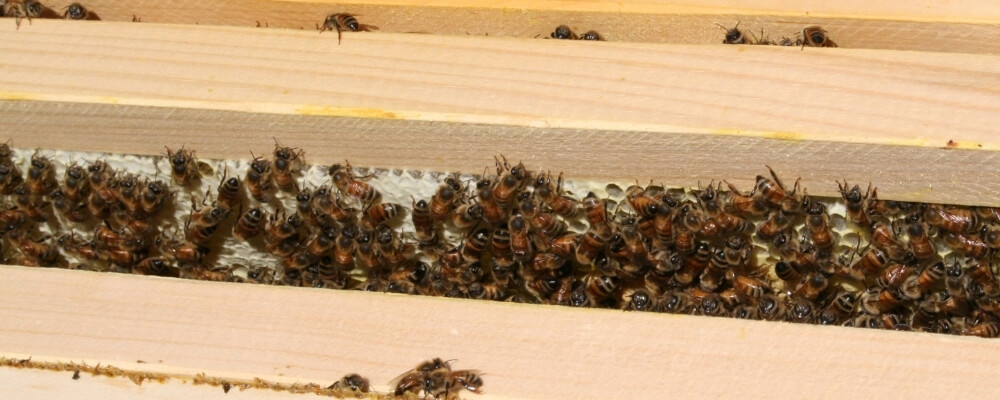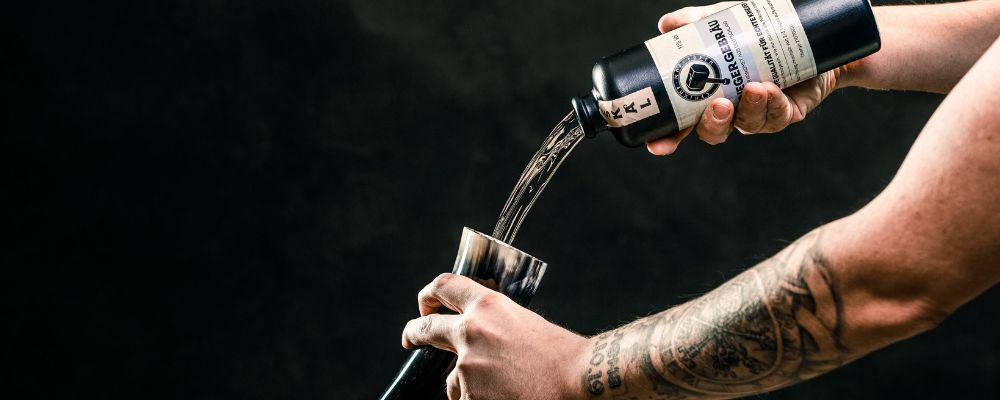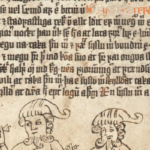When you read the Viking sagas one of the things that you will notice is that the Vikings seem to have drunk, a lot!
Sharing alcohol played an important role in the social customs that cemented social hierarchies and political alliances, which is why drinking features so prominently in so many Viking stories.
You can read more about Viking drinking practices here.
The Vikings drank a variety of beverages, including beer and wine, but the alcoholic tipple that appears to have been most prized by the Vikings was mead.
So, what is Viking mead and how was it made?

What is Mead?
While you have probably heard of mead, you might not be exactly sure what it is. Well, it is basically an alcoholic beverage made from fermented water and honey that has been widely popular for millennia. Variations on mead are known from ancient China, India, Egypt, Rome, Greece, and other parts of the world.
It was possible to make a variety of different meads by adding spices, fruits, grains, and hops. It probably would have had a similar consistency to wine and would have been between 10 to 20 percent alcohol depending on the brewing time and method.
It is assumed that Viking households would have brewed their own mead, as we know that they also brewed their own beer and wine.
Beer and wine were drunk on a regular basis. The alcohol-making process purifies water making it safe to drink, and gives it a long shelf-life, making it the ideal ration to take on sea journeys.
But mead would not have been drunk with the same regularity, because you need quite a bit of honey to make mead, and honey was relatively scarce in the Viking territories.

Where Did They Find Honey?
Scholars are often surprised by the frequency with which mead is mentioned in the sagas because it probably would have been relatively difficult for the Vikings to get their hands on large amounts of honey.
Today, the natural habitat of bees doesn’t extend into Scandinavia. This is because the colder countries of Norway, Sweden, and Iceland have shorter flowering seasons. So, bees prefer not to build their nests in areas where there is a scarcity of food for them.
While the Viking period was probably warmer than today, and so bees may have ventured a bit further north, there still probably wasn’t an abundance of bees in the area.
There is good reason to suspect that the Vikings traded for honey. For example, in the Egil Saga, traders are described as sailing to Denmark to procure honey, among other things.
The northern Vikings may also have actively farmed bees. There is evidence of tends of the thousands of dead bees in Old Oslo Town from 1175-1225, suggesting farming practices.
But whatever practices were used, mead was probably considered a delicacy and saved for special occasions.

Divine Mead
That the Vikings considered mead to be something special is also supported by the mythology surrounding mead.
The most famous mead known to the Viking was the Mead of Poetry, which gives anyone who drinks it complete mastery of the spoken word.
This mead has complex and divine origins. The original nectar the formed the basis of the mead first came into being at the conclusion of the war between the Aesir and Vanir gods. As part of the peace deal, all the gods spit into a bowl to create a seal.
The remaining liquid was so potent that they decided not to waste it, and instead used it to create Kvasir, the wisest of all beings.
Kvasir would wander the world sharing his knowledge but ran into problems when he encountered two dwarven artisans. Dwarves, the master blacksmiths of the Norse cosmos, were often looking for incredible and magical ingredients to imbue their creations with special powers.
They saw the blood of Kvasir as such a thing, and they killed him and used his blood to make the Mead of Poetry. After a series of adventures, the gods got their hands on the mead. They store it in Asgard, but along the way they also let some of it spill into the world of men, and consumption of this small quantity of the mead may explain the prowess of many Viking bards.
Norse mythology also says that when brave warriors die, they are taken to Valhalla, Odin’s great hall in Asgard, where they are to drink and feast until they are called on to fight again, alongside the gods in the final battle of Ragnarok.
In Valhalla, these brave warriors are also served mead by beautiful maidens as part of their reward.

What Do You Think?
What kinds of occasions would have warranted drinking the honey-flavored mead that the Vikings so prized?








